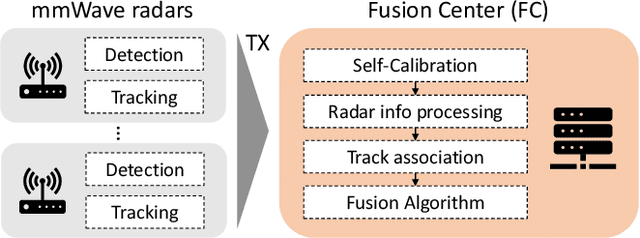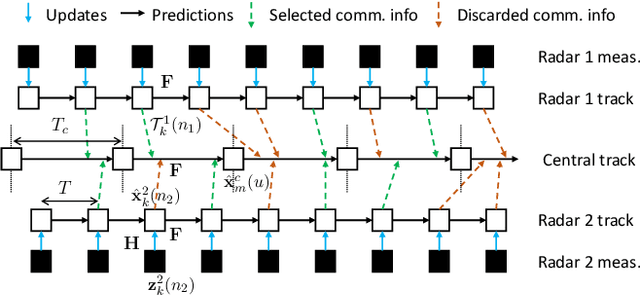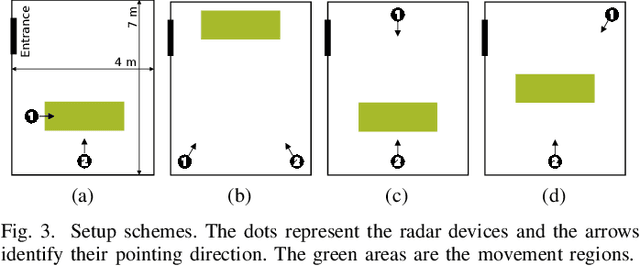Marco Canil
An Experimental Prototype for Multistatic Asynchronous ISAC
Oct 01, 2023Abstract:We prototype and validate a multistatic mmWave ISAC system based on IEEE802.11ay. Compensation of the clock asynchrony between each TX and RX pair is performed using the sole LoS wireless signal propagation. As a result, our system provides concurrent target tracking and micro-Doppler estimation from multiple points of view, paving the way for practical multistatic data fusion. Our results on human movement sensing, complemented with precise, quantitative GT data, demonstrate the enhanced sensing capabilities of multistatic ISAC, due to the spatial diversity of the receiver nodes.
ORACLE: Occlusion-Resilient And self-Calibrating mmWave Radar Network for People Tracking
Aug 30, 2022



Abstract:Millimeter wave (mmWave) radars are emerging as valid alternatives to cameras for the pervasive contactless monitoring of industrial environments, enabling very tight human-machine interactions. However, commercial mmWave radars feature a limited range (up to 6-8 m) and are subject to occlusion, which may constitute a significant drawback in large industrial settings containing machinery and obstacles. Thus, covering large indoor spaces requires multiple radars with known relative position and orientation. As a result, we necessitate algorithms to combine their outputs. In this work, we present ORACLE, an autonomous system that (i) integrates automatic relative position and orientation estimation from multiple radar devices by exploiting the trajectories of people moving freely in the radars' common fields of view and (ii) fuses the tracking information from multiple radars to obtain a unified tracking among all sensors. Our implementation and experimental evaluation of ORACLE results in median errors of 0.18 m and 2.86{\deg} for radars location and orientation estimates, respectively. The fused tracking improves upon single sensor tracking by 6%, in terms of mean tracking accuracy, while reaching a mean tracking error as low as 0.14 m. Finally, ORACLE is robust to fusion relative time synchronization mismatches between -20% and +50%.
MilliTRACE-IR: Contact Tracing and Temperature Screening via mm-Wave and Infrared Sensing
Oct 08, 2021



Abstract:In this work, we present milliTRACE-IR, a joint mm-wave radar and infrared imaging sensing system performing unobtrusive and privacy preserving human body temperature screening and contact tracing in indoor spaces. Social distancing and fever detection have been widely employed to counteract the COVID-19 pandemic, sparking great interest from academia, industry and public administrations worldwide. While most solutions have dealt with the two aspects separately, milliTRACE-IR combines, via a robust sensor fusion approach, mm-wave radars and infrared thermal cameras. The system achieves fully automated measurement of distancing and body temperature, by jointly tracking the faces of the subjects in the thermal camera image plane and the human motion in the radar reference system. It achieves decimeter-level accuracy in distance estimation, inter-personal distance estimation (effective for subjects getting as close as 0.2 m), and accurate temperature monitoring (max. errors of 0.5 C). Moreover, milliTRACE-IR performs contact tracing: a person with high body temperature is reliably detected by the thermal camera sensor and subsequently traced across a large indoor area in a non-invasive way by the radars. When entering a new room, this subject is re-identified among several other individuals with high accuracy (95%), by computing gait-related features from the radar reflections through a deep neural network and using a weighted extreme learning machine as the final re-identification tool.
 Add to Chrome
Add to Chrome Add to Firefox
Add to Firefox Add to Edge
Add to Edge